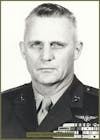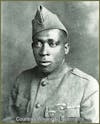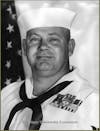US Army Air Corps 2nd Lt. Frank Luke Jr.: WWI Medal of Honor Recipient
Known as "The Arizona Balloon Buster," Frank Luke Jr.'s fearless exploits in the skies above the battlefields of Europe have left an indelible mark on history. From his daring aerial dogfights to his unparalleled courage in ...
Known as "The Arizona Balloon Buster," Frank Luke Jr.'s fearless exploits in the skies above the battlefields of Europe have left an indelible mark on history. From his daring aerial dogfights to his unparalleled courage in the face of overwhelming odds, discover the extraordinary story of this legendary fighter pilot. Don't miss this inspiring tale of one man's unwavering commitment to duty, honor, and freedom.
Please visit our website to learn more about other American Heroes.
www.dutyandvalor.com
Sources:
wikipedia.org
aerotechnews.com
nationalmuseum.af.mil
afhistoryandmuseums.af.mil
ltlukemuseum.org
airandspace.si.edu
Thank you for listening to Duty & Valor!
Music by Amelie Leclerc. Artist's other music can be found here.
Please follow us on your favorite social media site.
Facebook
Instagram
Twitter
YouTube
Welcome back everyone. On today's episode of Duty & Valor, you’ll hear the story of a man who volunteered for military service after the US entered WWI. A man who feared no man or machine while flying in combat. A man whose independent spirit defined his short, but legendary flying career. This is the story of Medal of Honor Recipient US Army Air Service 2nd Lt. Frank Luke Jr.
Frank Jr. was born to parents Tillie and Frank Sr. on May 19, 1897 in Phoenix, AZ. His parents, who had emigrated from Germany, had nine children in total and Frank Jr. was the fifth oldest. The rough life in early 20th century Phoenix helped shape Frank’s tough and independent nature. In high school he excelled in sports and was an avid horseman and hunter. Following his graduation from Phoenix Union High School, he found employment in a copper mine and, when not at work, he fought in bare knuckle boxing matches and taught dancing.
After the US officially entered WWI in April 1917, Frank enlisted in the aviation section of the US Army Air Corps five months later on September 25. It’s ironic that when he was born just twenty years earlier, the Wilbur brothers had not yet achieved their first flight at Kitty Hawk. He attended ground flight training at the University of Texas’ School of Military Aeronautics and then received flight training at Rockwell Field in San Diego, CA.
Upon completion of flight training in January 1918, he received his wings and a commission in the US Army as a 2nd Lt. He then found himself on a ship heading to Europe and he eventually landed in France and was assigned to the 3rd Aviation Instruction Center for additional training, which he completed in May of that year.
Lt. Luke was then assigned to the 1st Pursuit Group’s 27th US Aero Squadron. He was assigned a French Spad XIII and would fly this type of aircraft during his time in combat.
When Lt. Luke got to his squadron, his independent nature bumped into Captain Alfred Grant, his commander. One quote written about their conflict says that “some people go by the book, and others write the book.” What many would soon learn is that Lt. Luke was the one writing the book on WWI aviation.
Lt. Luke’s first aerial combat was on August 16, 1918 and it didn’t start off well. When the rest of his flight took off, his Spad XIII wasn’t ready forcing him to take off much later than the other men. He eventually got his plane in the air and he flew to join his flight near the front lines. When he returned to his aerodrome, much later than the other planes, his Spad was damaged and riddled with bullet holes. He claimed to have downed a German Fokker, but many didn’t believe him, especially Capt. Grant. The only man who did believe him was 1st Lt. Joseph Wehner. Lt.’s Luke and Wehner were said to be inseparable from that point on.
The 27th Aero Squadron’s main role was to target and eliminate enemy observation balloons, which were primarily used as observation platforms. Though the balloons were defended from the ground with anti-aircraft guns, and from the air by enemy fighters, Lt. Luke had an innate ability to wreak havoc on them.
From September 12 -15, Lt. Luke was credited with downing eight of these balloons, earning him his first Distinguished Service Cross. This was the start of a legend, a combat pilot nicknamed “The Arizona Balloon Buster.”
Days later on September 18, Lt. Luke again distinguished himself. That day he and Lt. Wehner were tasked with spotting and destroying observation balloons. Lt. Luke destroyed two balloons while Lt. Wehner provided cover. Soon after both men were attacked by a large formation of German planes.
Lt. Luke turned his Spad around and engaged the two closest enemy planes, shooting them both down. Though very low on fuel, he spotted a third plane and attacked it, destroying that one as well.
The two balloons and three aircraft were all downed over a ten minute period, and during this engagement, Lt. Luke lost sight of Lt. Wehner.
He returned to the squadron, but Lt. Wehner never returned. It was later discovered that Lt. Wehner was shot down by Lt. Georg von Hantelmann, the deadly German fighter ace credited with at least 25 aerial victories. For actions that day, Lt. Luke was awarded a second Distinguished Service Cross, though this one would eventually be awarded posthumously.
The death of Lt. Wehner, his only close friend, deeply affected LT. Luke. Over the next few days, he flew whenever he wanted and was absent without leave on occasion. Seeing that Lt. Luke wasn’t doing well, he was ordered to take a five day leave.
He returned to his unit on September 25 and flew the very next day. He was still having conflict with Captain Grant and he continued to take off without authorization. On September 28, he took off alone and he shot down two more aircraft before landing at a French aerodrome. There he claimed to have engine trouble, though he might have needed a respite from his encounters with Captain Grant. Lt. Luke ended up staying the night at the French base, which ended up being his last night alive.
Early in the morning on September 29, Lt. Luke flew back to his base where he was immediately reprimanded by Captain Grant, who also grounded Lt. Luke indefinitely. As you might have expected, Lt. Luke was angry and decided to not heed the Captain's order. He boarded his Spad XIII and flew to another American base at Verdun. Upon landing, Lt. Luke was immediately arrested on Captain Grant’s orders.
Soon after, Major Harold Hartney, who knew Luke well, landed at Verdun. Lt. Luke asked the Major for permission to attack three enemy observation balloons that were spotted nearby. He was granted permission to do so and he soon took off.
That evening, Lt. Luke engaged the three balloons six miles behind German lines, downing all of them. During his attack, none of the reported eight enemy aerial pursuers were able to bring him down.
Unfortunately, a hilltop German machine gun took aim at his plane and one round hit Lt. Luke by his right shoulder, passed clear through his body, exiting his left side.
Due to his wound, he was getting weaker by the moment, which forced his decision to land. While looking for a landing spot, he strafed German soldiers positioned nearby, reportedly killing six and wounding as many more.
Lt. Luke eventually put his plane down in a field near the village of Murvaux, but he was surrounded on all sides by enemy infantry. After climbing out of his aircraft, he attempted to make an escape by heading to a nearby stream, but he fell dead soon after.
Lt. Luke’s body was retrieved by the Germans and he was buried the next day in a local cemetery. Two months later, American forces reinterred him at the Meuse-Argonne Cemetery and Memorial.
Lt. Frank Luke Jr.’s combat flying career was a brief, but remarkable, one. From August 16 to September 30, 1918, he was credited with downing 14 balloons and four aircraft. His 18 confirmed aerial victories were the most up to that point in the war, though he would later be passed by the legendary Captain Eddie Rickenbacker and his 26 victories.
In writing about Lt. Luke, Capt. Rickenbacker said that “he was the most daring aviator and greatest fighter pilot of the entire war. No other ace ever came close to Luke’s achievements.”
For his actions on September 29, Lt. Frank Luke Jr. was promoted to 1st. Lt. and posthumously awarded the Medal of Honor.
His legacy remains today. The Army Air Corps renamed Litchfield Park Field to Luke field, now known as Luke AFB, on June 6, 1941.
In a fitting tribute to the legend of the Arizona Balloon Buster, on February 4, 2023 F-22 Raptors with the call signs Luke01 and Luke02 were sent to shoot down a Chinese spy balloon once it was over the Atlantic Ocean. The aircraft were part of the 27th Fighter Group, which is descended from Lt. Luke’s 27th Aero Squadron.
Lieutenant Frank Luke Jr. exemplifies the epitome of courage, determination, and selflessness. Luke's relentless pursuit of excellence and his willingness to sacrifice for the greater good embody the very essence of heroism, and he will forever be remembered as a true American hero whose courage continues to inspire American pilots.
Thank you for listening to this episode of Duty & Valor. To read more about this week’s hero, check out the sources used in today's episode in our show notes and at dutyandvalor.com.
If you want to listen to our episodes early, we release new episodes on our YouTube channel of the same name on Fridays at 5pm. Also, on our channel we release daily YouTube shorts that highlight our Nation’s heroes, most of whom haven’t been featured on the show yet.
Be sure to like, follow, and share our episodes and please join us for our next episode, where we'll be sharing the inspiring story of another American hero who served with pride and lived with humility.




















